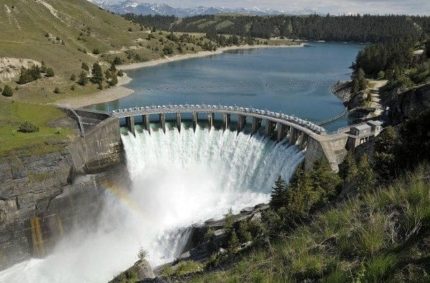The Federal Government of Nigeria has issued an alert to 11 states over the planned water release from the Lagdo Dam in Cameroon. This information was conveyed in a press statement released on Tuesday by the Director-General of the Nigeria Hydrological Services Agency (NIHSA), Umar Muhammed. The agency highlighted that controlled water releases from the dam would begin on September 17, 2024, and could progressively increase over the following days.
According to the NIHSA, the release will start at a rate of 100 cubic meters per second (m³/s), escalating to 1,000 m³/s over the next seven days, depending on the inflow from the upstream Garoua River. The Garoua River serves as a major tributary to the Benue River, and water from this release is expected to flow downstream into Nigeria’s river systems. While the agency assured the public that the water release would be gradual to prevent flooding, it emphasized the importance of preparedness for potential flood impacts.
Controlled Release to Manage Flooding Risk
The NIHSA explained that the controlled release of water from the Lagdo Dam is intended to minimize the risk of flooding downstream, particularly in states that border the Benue River. These states include Adamawa, Taraba, Benue, Nasarawa, Kogi, Edo, Delta, Anambra, Bayelsa, Cross River, and Rivers. Although the flow levels in the Benue River are currently within safe limits, the agency urged all states and local authorities to remain vigilant and take proactive steps to mitigate any potential risks.
“The planned discharges from the Lagdo Dam will be gradual, and there is no expectation of major flooding downstream in Nigeria,” the statement read. However, it noted that increased water flow in the coming days could elevate the risk of localized flooding. The agency reassured the public that it would continue to closely monitor the water levels in the Benue River and other inland rivers to provide regular updates and help prevent flood-related disasters.
History of Flooding Concerns and Recent Incidents
The Lagdo Dam, located in Northern Cameroon, has long been a subject of concern for Nigeria due to its impact on water levels in the Benue River, which flows through several Nigerian states. The dam covers an area of 586 square kilometers and is a critical part of the Niger Basin water system. Each time water is released from the dam, there is an increased risk of flooding in Nigeria, particularly in areas that lie along the Benue River’s path.
In recent weeks, Nigeria has already experienced devastating floods in several regions. Notably, a severe flood event in Borno State last week claimed the lives of over 30 individuals and displaced more than one million residents. This latest alert from the Federal Government is seen as part of broader efforts to mitigate the impact of potential floods during the rainy season. The NIHSA urged citizens and state governments to prepare and implement measures to reduce the damage that could result from the dam’s water release.
NIHSA to Monitor River Levels and Provide Updates
In response to the impending water release, the Nigeria Hydrological Services Agency has pledged to closely monitor the water flow conditions of both the Benue River and Nigeria’s inland rivers. The agency will consistently update the public on the water levels across the country’s major rivers to ensure early warnings if necessary.
Preventing a flood disaster is a priority for NIHSA, and the agency has put measures in place to track the situation in real-time. By providing frequent updates, the agency aims to mitigate any potential risk to life and property, ensuring Nigerians are well-prepared in case conditions change. This proactive approach reflects lessons learned from past incidents when unexpected water releases from the Lagdo Dam led to catastrophic flooding across Nigerian states.
Table of Contents
Discover more from OGM News NG
Subscribe to get the latest posts sent to your email.














